John Hurrell – 21 February, 2018
Six artists are used here to present an intriguing show that contemplates carbon, the fourth most abundant chemical element in the universe, one which includes graphite and diamond amongst its allotropes, and the fifteenth most abundant element on earth. Carbon is called the ‘king of elements' because of the huge number of compounds (almost ten million) it is part of—only a fraction of calculatable possibilities. This show looks at multiple aspects.
Auckland
Gabriel de la Mora, Gunter Umberg, Matthew Allen, Ceara Metlikovec, Arik Levy, Jan Albers
Carbon
7 February - 10 March 2018
Six artists are used here to present an intriguing show that contemplates carbon, the fourth most abundant chemical element in the universe, one which includes graphite and diamond amongst its allotropes, and the fifteenth most abundant element on earth. Carbon is called the ‘king of elements’ because of the huge number of compounds (almost ten million) it is part of—only a fraction of calculatable possibilities. This show looks at multiple aspects.
Gunter Umberg is well known for his cantilevered laminated MDF paintings, layered panels made so that the front, matte-powdered surface hovers in space—and the acutely angled sides hide behind it. The work in this show is not black but a very dark, deep, smudgy blue, that is hard to detect before your eyes adjust. You have to wait for the soft subtle chroma to optically emerge.
Matthew Allen’s three narrow vertical canvases coated with graphite don’t look like canvases. In their parallel alignment, they look like strips of sheet metal glued on to skinny stretchers—being smooth, grey, shiny and streaky without grain on their front surfaces. They exploit the sheen you get with drawings made exploiting a hard pencil lead, showcasing the lack of texture and buffed—not looking like drawings made on linen. Which is in fact what they are.
Ceara Metlikovec’s three glazed images made with graphite on Arches paper are so precise and intricate that they seem as if they were made using a drawing machine connected to a computer. The flickering vertical lines, made in different tones of grey, are mysterious because you know either dry lead graphite (in pencil form), or (brushed on) liquid diluted graphite was involved—but how technically? They look like woven textiles, impeccably drawn, and in sections seem to contain a hint of colour. You are never sure. I think they are the pick of the show.
Arik Levy’s facetted metal sculptures on black plinths—one reflective stainless steel and the other a bronze painted glossy black—are made of stacked up oblong/crystalline forms that collectively suggest standing or crouching figures. The black work alludes to balanced chunks of coal while the silver work reflects colours and forms experienced outside the gallery.
Gabriel de la Mora and Jan Albers works look at smoky chemical residues and changes resulting from fire. Both are extremely fragile and are encased in protective Perspex boxes.
De la Mora’s work shows a blank canvas that has been partially incinerated with perhaps a flame-emitting welding torch or Bunsen burner. The bottom half of the canvas has been so burnt that pieces have flaked off and left a gaping hole. The pale top has vertical wispy smoke lines that delicately suggest a forest of trees. A coincidence I think. It’s a fascinating object.
Jan Albers has done something similar with a projecting 15 x 10 grid of wooden batons, now burnt and charred. The charcoal matrix plays order against controlled chaos; structure versus limited decay. The Perspex box emphasises safe control, preventing unruly unpredictability. Nothing falls out or in, and the box becomes a metaphor for the safety of the gallery space. The messy life world is kept at arm’s length.
John Hurrell
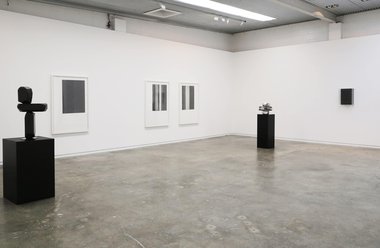

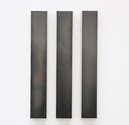



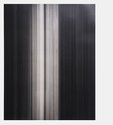
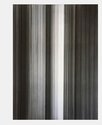
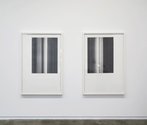

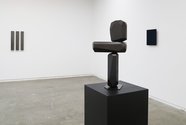
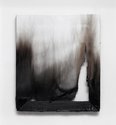
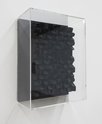
 Two Rooms presents a program of residencies and projects
Two Rooms presents a program of residencies and projects Advertising in this column
Advertising in this column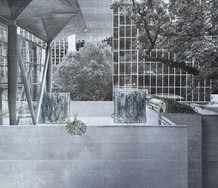
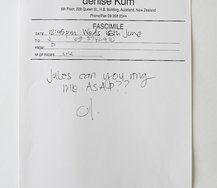
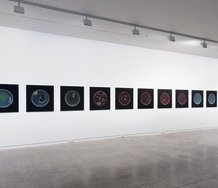
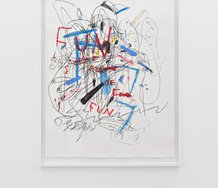
This Discussion has 0 comments.
Comment
Participate
Register to Participate.
Sign in
Sign in to an existing account.